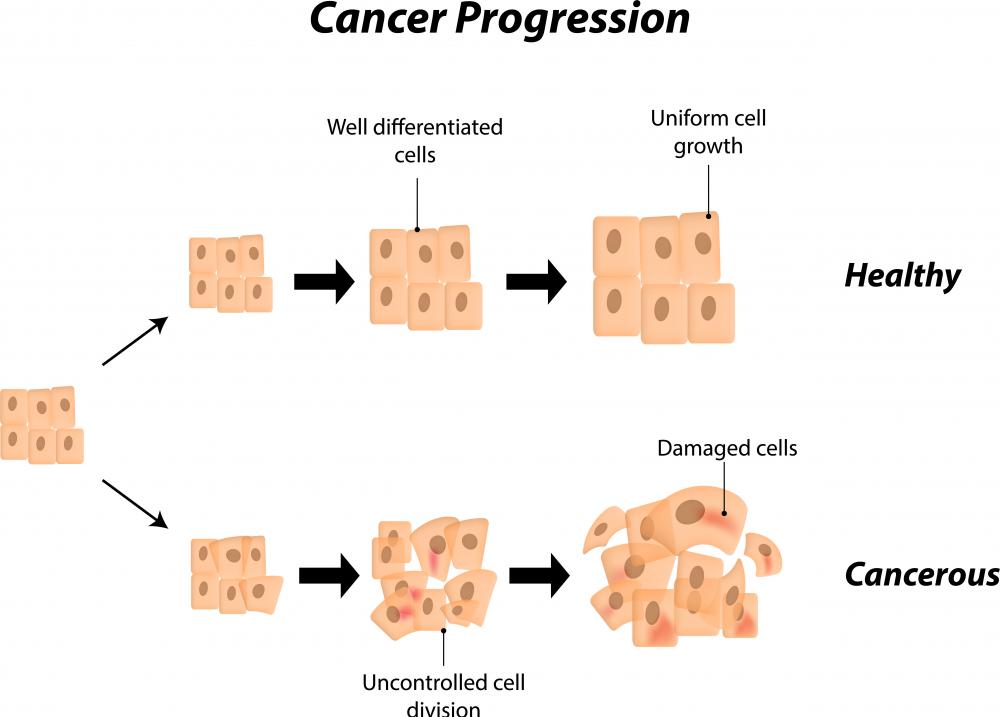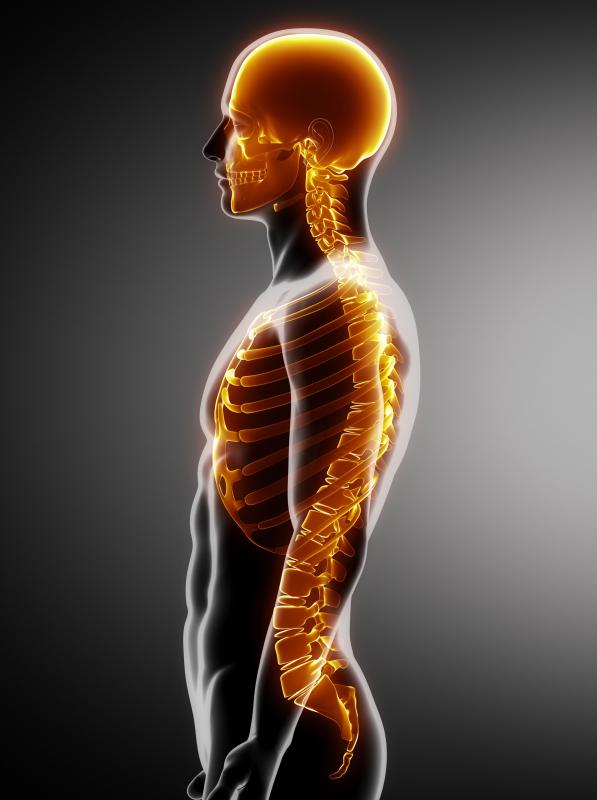At TheHealthBoard, we're committed to delivering accurate, trustworthy information. Our expert-authored content is rigorously fact-checked and sourced from credible authorities. Discover how we uphold the highest standards in providing you with reliable knowledge.
What is Osteochondromatosis?
Osteochondromatosis is a medical condition that causes multiple osteochondromas, or bone tumors, to develop on a patient’s bones. This disorder has several names including multiple osteochondromatosis, multiple hereditary exostosis, and multiple osteocartilaginous exostosis. Most patients with osteochondromatosis inherit a genetic predisposition that may increase the likelihood that this disease develops. Some individuals have contracted this medical condition randomly with no apparent genetic risk factor. Men and people under 30 years of age tend to have a greater risk of developing this disorder.
People with osteochondromatosis may notice pain at the location of a bone tumor and a visible deformity. Bones near osteochondromas typically grow abnormally. Men and women with this condition may experience a limited range of motion and locking of an affected joint as well.

Osteochondromas located near a nerve may cause tingling or numbness. In some cases, reduced blood flow can occur if a bone tumor presses against a blood vessel and results in lower pulse rates. Skin over an arm or leg may change color if osteochondromatosis affects blood flow in a limb.
A doctor may use x-ray imaging tests to identify a bone tumor. Computerized tomography (CT) scans often reveal aggressive tumor growth and metastasizing, or spreading of tumors, to other parts of the body. Physicians may also use a magnetic resonance imaging (MRI) test, patient medical history, and a thorough physical examination to diagnose osteochondromatosis. In some instances, a patient with a bone tumor can undergo a biopsy where a physician removes a tissue sample from the tumor and a laboratory performs cancer tests.

Benign osteochondromas may not require surgery, especially if they do not cause severe pain or other symptoms. Some patients with deformities, such as knock knees, can undergo surgery to have their bones straightened. A surgeon may completely remove a bone along with its tumor in cases where osteochondromatosis is severe. Surgically removed limbs typically require reconstructive surgery or prosthesis.

Patients with osteochondromas that grow after puberty often have a greater likelihood that the bone tumor will become malignant. A large cartilage cap on a bone tumor may indicate that the tumor is becoming malignant. In some cases, pain at the site of the tumor may be a sign that cancer is developing.
Synovial osteochrondromatosis, or synovial chondromatosis, grows in the lining of a joint, such as a hip, elbow, or knee joint. These bone tumors typically separate from the joint lining and move freely within a patient’s joint. Tumors of this type are generally benign and rarely develop into cancer. Physicians may remove the bone tumors if the tumors cause discomfort.
AS FEATURED ON:
AS FEATURED ON:

















Discuss this Article
Post your comments